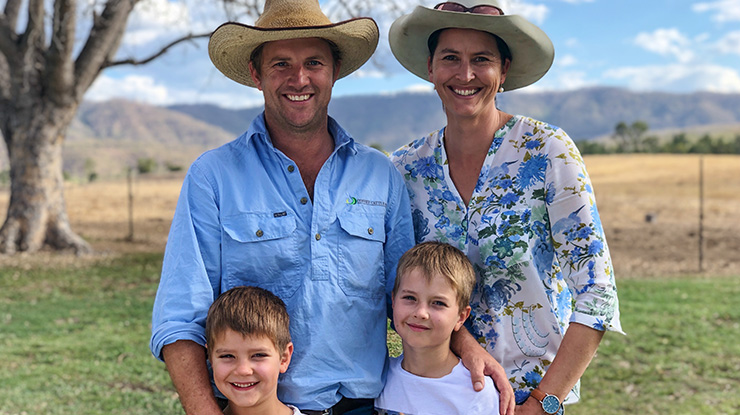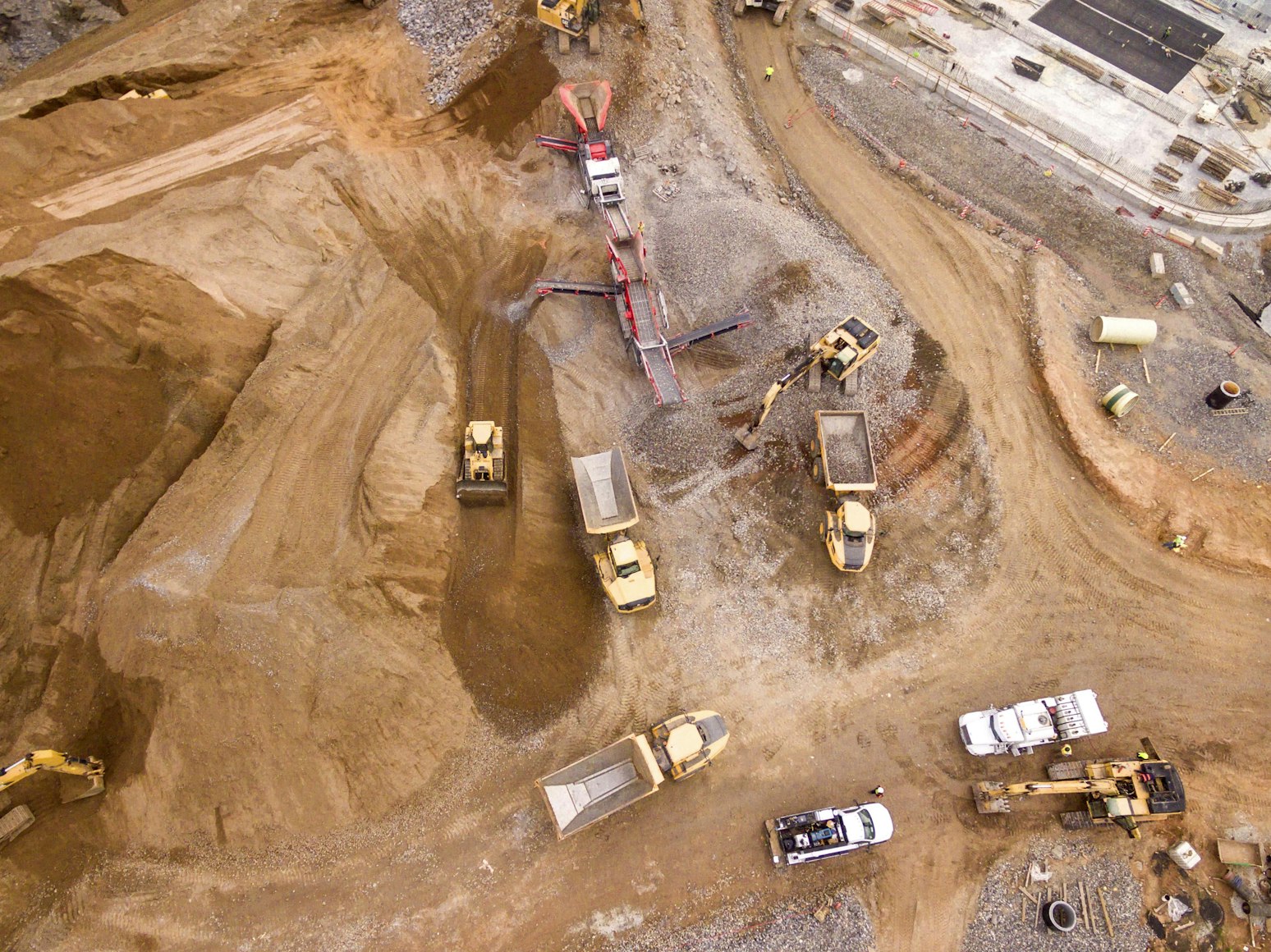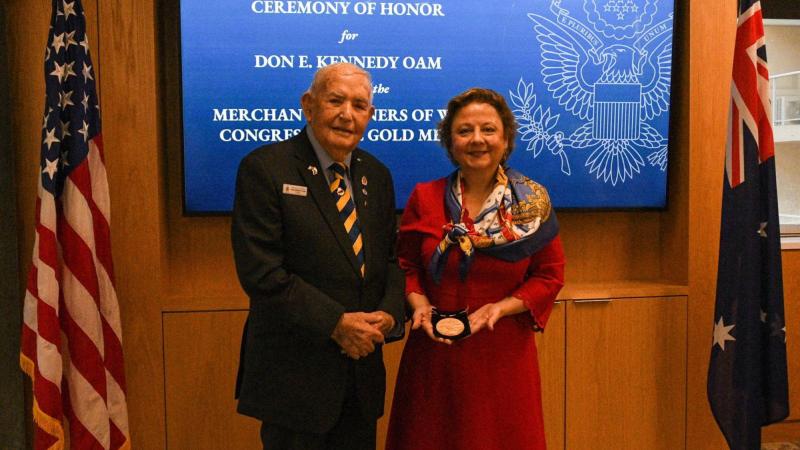 Adam and Jacynta Coffey with their children Will and Sam
Adam and Jacynta Coffey with their children Will and Sam
Adam and Jacynta Coffey are not interested in carbon sequestration to make a quick buck on their central Queensland property. They’re not even that motivated by the social licence or consumer credibility which comes with it. For them, good carbon management is good business sense.
“Increasing soil carbon goes hand-in-hand with increasing productivity,” Adam said.
The Coffeys appreciate that soil carbon baseline and follow up measurements are required to confirm soil carbon increases. They’ve recently signed on to an Emissions Reduction Fund soil carbon sequestration project as many of the practices they’re employing to build soil health increase the potential for soil carbon to increase as well.
“We’re continually trying to improve our enterprise and every time we increase environmental gains in terms of more ground cover, less erosion and better water management, the more infiltration and (potentially) soil carbon we have up our sleeve.
“It’s not money in the bank but it feels the same,” Adam said of the increased sustainability and productivity of healthier soils.
Five years ago, the Coffeys moved to central Queensland after running a cattle station near Katherine, NT. The new property had previously been used for investment scheme timber plantations, which left 40,000 10-year-old trees (grown specifically for wood chip) on 400ha. After the trees were removed, paddock redevelopment was the first priority.
The Coffeys grow mostly improved perennial pastures and maintain a good legume content consisting of different secas, centros and Agrimix Progardes® Desmanthus. They have also installed reliable water infrastructure (including sinking bores with solar powered pumps).
“When we first arrived, heavy rains would fall and the water would virtually run straight off the place. By focusing on soil health, we now see the moisture soak straight in and then fill the creeks,” Adam said.
“That showed us the power of looking after your soil.”
The Coffeys have benchmarked their livestock production from day one on the new property and felt carbon accounting was a natural extension of this. In 2020, they participated in MLA’s pilot CN30 carbon accounting training.
“We’ve had exposure to a big carbon offset project in the past and now we want to manage carbon to improve our business first and foremost,” Adam said.
The main challenges Adam found with the carbon accounting process was around entering data into the spreadsheet.
“We have all the data but the seasonal timeframe used in the spreadsheet is not the way we run our business,” Adam said.
The primary driver of the pilot workshops was to undertake market research on the carbon accounting process and tool to inform refinement and upgrades. MLA and various research organisations have already invested in improving the carbon accounting tool used in the workshop process (SB-GAF). Including more options for how data can be entered is a recommendation for future upgrades of the carbon accounting tool.
The Coffeys now know how they can improve carbon mitigation but say all options must be profitable solutions and subject to business analysis before being implemented.
Focus areas they’ve identified to potentially support reductions in their net greenhouse gas emissions include:
- Soil health supported by high levels of ground cover, species diversity and well managed rotational grazing. The couple have purchased a disc seeder for renovating pastures while maintaining ground cover and for sowing opportunity fodder crops.
- Lifting cattle productivity by removing non-performers and seeking genetic traits for growth while keeping reproductive traits is the first priority. These herd management practices enable fewer livestock to be in paddocks producing methane for a shorter amount of time while retaining the same level of productivity. This means that emissions generated per kilogram of live weight are reduced and productivity is optimised.
- Dedicating larger areas for tree planting which can help to offset emissions and can also increase productivity by providing livestock shade and shelter. They’re also investigating Leucaena in some paddocks using the Redlands variety.
Lessons learned
|
Adam and Jacynta Coffey
T: 0419 552 225






